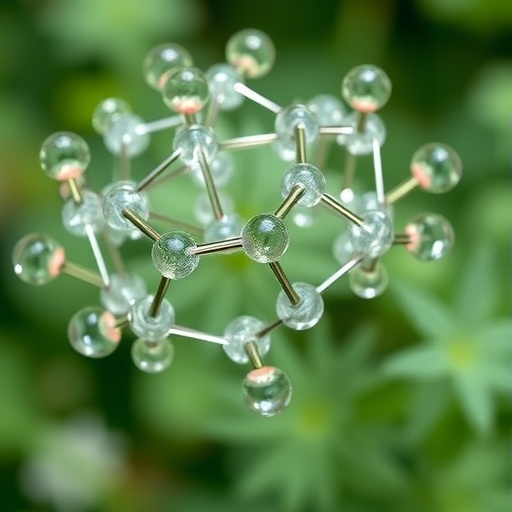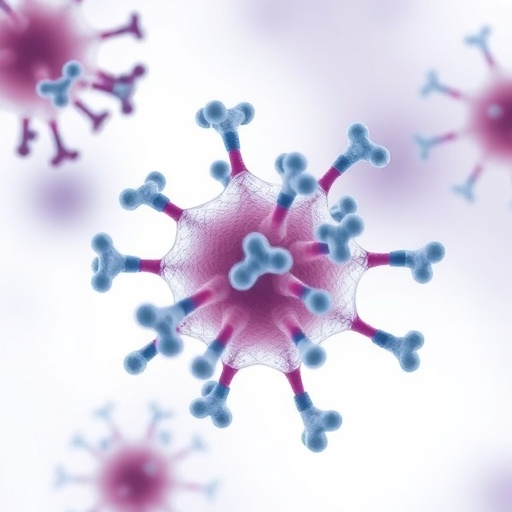Recent advancements in pharmaceutical research have led to an exciting focus on natural compounds and their derivatives in combating a range of microbial infections. This exploration has galvanized various scientific communities to investigate the versatility of compounds like oleanolic acid. This triterpenoid has gained attention due to its wide-ranging pharmacological properties, including anti-inflammatory, antioxidant, and antimicrobial effects. As researchers dive deeper into the molecular intricacies of oleanolic acid, a significant stride has been made with the introduction of novel derivatives that hold promise for future therapeutic applications.
In the study conducted by Ma, Deng, and Lu, innovative derivatives of oleanolic acid featuring piperazine pyrimidine moieties have been synthesized. The piperazine group is known for its potential in ameliorating the solubility and permeability of drug compounds, which can vastly improve their bioavailability. The strategic incorporation of this moiety into the chemical structure of oleanolic acid is not just a trivial modification; it exemplifies a biopharmaceutical strategy aimed at enhancing the efficacy of existing natural compounds.
The synthesis of these novel compounds was meticulously designed, taking into account the need to balance structural efficacy with chemical stability. Synthetic organic chemistry plays a pivotal role in this endeavor, as researchers are challenged to devise methods that yield high purity while minimizing the formation of by-products. The research team employed various strategies, including reaction optimization under different solvent conditions, to ensure that the resulting compounds possess the desired antimicrobial efficacy against a spectrum of pathogens.
To evaluate the antimicrobial properties of the synthesized oleanolic acid derivatives, a series of in vitro assays were conducted. These assays aimed to determine the Minimum Inhibitory Concentration (MIC) values, which serve as a crucial metric for assessing the effectiveness of a compound against specific bacterial strains. Such studies reveal the potential of these derivatives to inhibit microbial growth, which is central to their applicability as therapeutic agents. Positive findings from these assays could pave the way for clinical applications, particularly in treating infections that are posed by antibiotic-resistant strains.
Antibiotic resistance is an alarming issue in contemporary medicine, and researchers are actively seeking alternative treatments. Compounds derived from natural sources like oleanolic acid present an invaluable resource in this quest. Unlike traditional antibiotics, which often target specific bacterial functions, the antimicrobial activity exhibited by oleanolic acid derivatives may be more multifaceted, targeting a variety of cellular processes. This characteristic is particularly beneficial in devising agents that can effectively tackle resistant strains of bacteria.
As the scientific community delves deeper, it becomes evident that understanding the mechanisms underlying the antimicrobial action of these derivatives is essential for rational drug design. Investigating the interaction of these compounds with microbial cell membranes and elucidating their mode of action can help refine further development and optimization. The research team made a promising start in this regard by performing preliminary studies to shed light on the bioactivity of their synthesized derivatives.
The potential implications of such innovations extend beyond mere efficacy in combating infections. These novel derivatives could ideally become part of a combination therapy, enhancing the overall therapeutic outcome when used alongside conventional antibiotics. This approach is particularly relevant in treating polymicrobial infections, where diverse microbial populations are present. Reducing the risk of resistance development by leveraging a synergistic effect could represent an innovative solution to an escalating global health crisis.
The therapeutic landscape is continuously evolving, and the intricacies of drug development require a holistic understanding of pharmacodynamics and pharmacokinetics. The novel oleanolic acid derivatives synthesized by the researchers not only showcase their dedication to antimicrobial research but also exemplify the need for rigorous evaluation of safety and efficacy. Continued investigation into long-term effects and potential side effects plays a critical role in determining the viability of these compounds as candidate drugs.
Collaborative efforts in interdisciplinary research are essential to advancing our understanding of such complex compounds. The synthesis, characterization, and validation processes require expertise in synthetic chemistry, microbiology, and pharmacology, making it imperative for research teams to engage in synergistic collaborations. These partnerships can foster innovation and expedite progression from laboratory discoveries to clinical applications.
As the demand for new antimicrobial agents continues to intensify, the potential of oleanolic acid derivatives emerges as a beacon of hope. They represent a new frontier for researchers aiming to confront the challenges posed by an ever-evolving landscape of pathogens. Future studies geared towards optimizing these compounds and exploring their full range of biological activity will be paramount in realizing their potential as therapeutic agents.
By focusing on the development of methodologies that ensure the sustainability of these compounds, researchers can ensure that their therapeutic benefits are not overshadowed by their origins. Investigating natural compounds should align with the principles of sustainable chemistry to promote environmental integrity as well as human health. This approach can facilitate not only the discovery of new drugs but also support the broader objective of preserving biodiversity.
In conclusion, the research conducted by Ma, Deng, and Lu highlights a significant advance in the field of medicinal chemistry. The innovation presented through novel oleanolic acid derivatives containing piperazine pyrimidine moieties opens new doors for antimicrobial research. Their findings serve as an impetus for continued exploration and reaffirm the importance of integrating traditional knowledge of natural compounds with contemporary scientific techniques. As we look toward the future, the marriage of these disciplines is likely to yield remarkable developments in health care, particularly in the fight against microbial resistance.
The journey of these compounds from synthetic pathways to their eventual applications is just beginning, and much work remains to be done. Thorough investigations into their biological activities, alongside collaborations across various scientific fields, will pave the way for transformative changes in how we approach antimicrobial therapy. As researchers remain steadfast in their commitment to innovation, the hope is that these novel derivatives will one day become a staple in therapeutics, potentially answering the call of a new generation of medicinal challenges.
Subject of Research: Development of novel oleanolic acid derivatives with antimicrobial activity.
Article Title: Novel oleanolic acid derivatives containing piperazine pyrimidine moieties: design, synthesis, and antimicrobial activity.
Article References:
Ma, F., Deng, Q., Lu, Y. et al. Novel oleanolic acid derivatives containing piperazine pyrimidine moieties: design, synthesis, and antimicrobial activity.
Mol Divers (2025). https://doi.org/10.1007/s11030-025-11398-x
Image Credits: AI Generated
DOI: https://doi.org/10.1007/s11030-025-11398-x
Keywords: Oleanolic acid, piperazine pyrimidine, antimicrobial activity, drug development, antibiotic resistance, medicinal chemistry, natural compounds, bioavailability, synthesis, pharmacology.
Tags: antimicrobial oleanolic acid derivativesbiopharmaceutical strategies for drug developmentchemical stability in drug designenhancing drug solubility and permeabilityinnovative drug compounds for therapymicrobial infection treatmentnatural compounds in pharmaceuticalsnatural product derivatives in antimicrobial researchpharmacological properties of triterpenoidspiperazine pyrimidine synthesissynthetic organic chemistry in medicinetherapeutic applications of oleanolic acid





